sqaush
Jr. Member
That is a knarly mess! Have you ever metal detected it?
Sent from my SAMSUNG-SM-G891A using Tapatalk
Sent from my SAMSUNG-SM-G891A using Tapatalk
As big as tree is and as bad as it is twisted and mutilated it's gotta be way old. The tree is a good two feet through it's an oak. The road is about 70 years old. What happened to the tree the rest around it are normal trees. But then again they ain't near as old.
Awesome. Good to see some locals. I've seen several trees lately that seem to be markers down near me in the Boston mtns by lake fort smith park
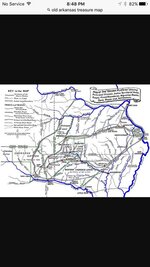 . A big part of the Boston and Ozarks was reservation land 200 years ago give or take. There is a lot of they're history left if we learn what to look for. The Cherokee still come to Richland creek and a few other places to have ceremony's every year. The trail of tears that we read about didn't go through here this was the destination.
. A big part of the Boston and Ozarks was reservation land 200 years ago give or take. There is a lot of they're history left if we learn what to look for. The Cherokee still come to Richland creek and a few other places to have ceremony's every year. The trail of tears that we read about didn't go through here this was the destination.Trees like those, that survived the saws of the first cutting of the virgin timber here in Arkanss
The growths that can be found on a few trees is what I'm trying to wrap my head around. Are they man Madeline how do they make them.
looks like a burl wood knot, have one near my site except it's at the base, possibly a marker ?
You are so right about that, Chadeaux. What's sad is that in my family only two generations ago that knowledge still existed. My grandmother knew so much, and I was too young to realize that it would be lost when she passed.Truth is, we're not as smart today as those folks were back then who had to rely on their ability to live in the wild and understand how the natural world worked.



That burl looked like it might have a snake in it on the lower right. When the leaves are off I'll go back and get good picture it to check out. View attachment 1365293
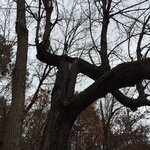 , this one has a lot of directions to follow..
, this one has a lot of directions to follow..
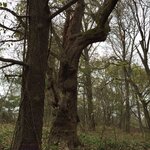 the large knob on this one points straight to my owl shown on my thread..
the large knob on this one points straight to my owl shown on my thread..
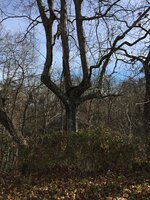 , Pitchfork or turkey track?..
, Pitchfork or turkey track?..
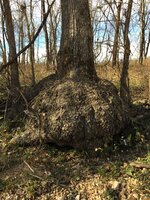 not sure if this burled base is a marker or not but its close to everything else.., all in southwest Missouri
not sure if this burled base is a marker or not but its close to everything else.., all in southwest Missouri